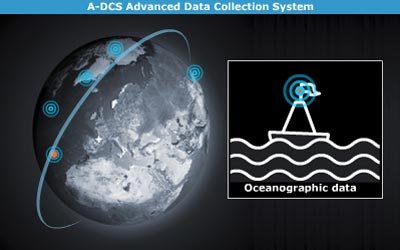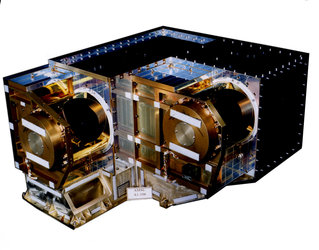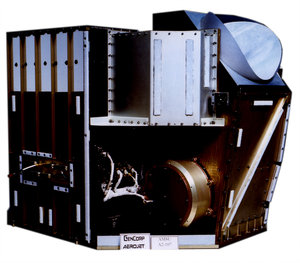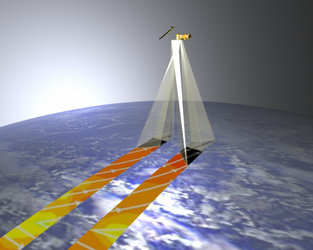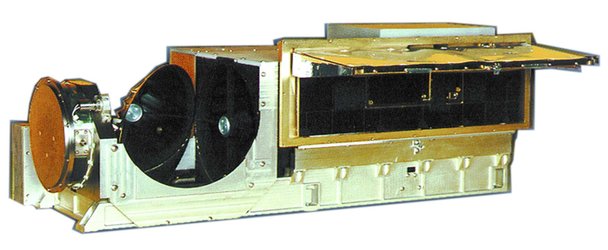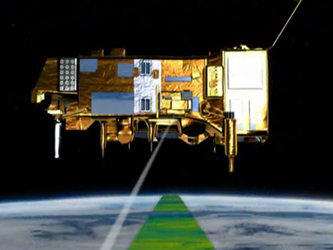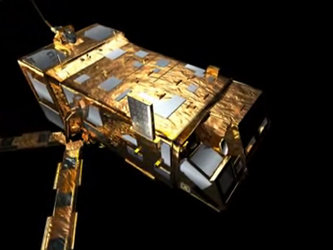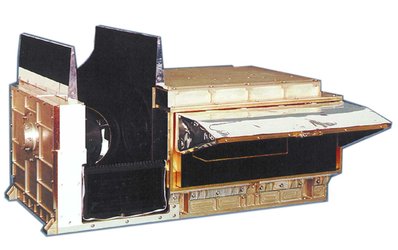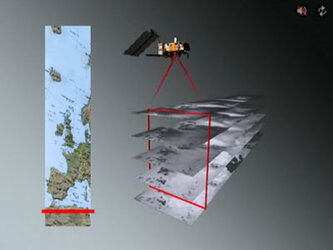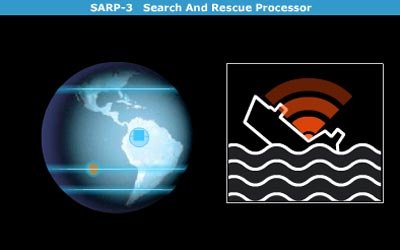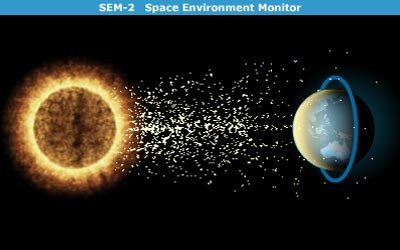SEM-2 description
The Space Environmental Monitor (SEM) has three major components:
- Total Energy Detector (TED)
- Medium Energy Proton and Electron Detector (MEPED)
- Data Processing Unit (DPU)
Total Energy Detector (TED)
TED uses eight programmed swept electrostatic curved-plate analysers with continuous dynode electron multipliers (CDEM) to select the particles type and energy.
The TED measures electron and proton fluxes in the 0.05 to 20 keV energy range. Measurements are related to j (E, alpha), the differential directional energy flux, found in the number of protons and electrons in units of number per (m²-s-Sr-keV).
Two independent measurements of the particle flux are made at 0 and 30° from the local vertical. The total energy is divided in two ranges: 0.05 to 1 keV and 1 to 20 keV. The TED also measures the maximum differential energy flux density and the energy at which it occurs for each direction and type (electron and proton).
The TED consists of eight Electro-Static Analyzers (ESA), Pulse Height Discriminators (PHD), and In-Flight Calibrator (IFC), two high voltage (HV) supplies, a sweep voltage supply and housekeeping circuits. A particle (proton, ion or electron) enters an entrance of an ESA. If the particle has the right charge (+ or -) and energy, it passes through the ESA to the Continuous Dynode Electron Multiplier (CDEM). The CDEM makes a pulse that is processed by the PHD that sends a logic pulse to the DPU.
Medium Energy Proton and Electron Detector (MEPED)
The MEPED has two sets of proton and electron telescopes and four omni-directional detectors. These provide both directional and omni-directional measurements.
The directional sensors, called telescopes, make independent measurements of the particle types in six energy ranges from 30 to greater than 6900 keV for protons, and three energy thresholds from 30 to 300 keV for electrons. Directional measurements are made near the zenith direction and 90° off nadir.
The omni-directional sensors measure proton energy in four thresholds from 16 to 140 MeV. Each sensor has the following:
- dome of moderating material that absorbs energy from the particle (and so sets the detection level)
- silicon solid state detector
- pre-amplifier
- level comparator
|
||||||||||||||||||||||||||||||||||||||||||||||||||||||||||||
The MEPED consists of:
- two proton telescopes (each containing two Solid State Detectors – SSD)
- two electron telescopes (each containing a solid state detector)
- four omni-directional sensors (each containing one solid state detector)
- charge sensitive pre-amplifiers
- analog signal processors
- proton and electron coincidence logic
- in-flight calibrator
- low voltage regulator
- SSD bias supply
- analog telemetry
A charged particle enters a SSD where it releases charges from the crystal until its energy is gone. The amount of charge released is proportional to the energy deposited in the crystal. The charge is collected by a charge sensitive pre-amplifier, which converts the charge to a voltage pulse. After passing through an analog signal processor circuit, that shapes the pulse by pole-zero cancellation, single differentiation, double integration and baseline restoration, coincidence logic separates the pulses into the various channels for counting by the Data Processing Unit (DPU).
Data Processing Unit (DPU)
The DPU is the electrical interface between TED and MEPED and the satellite.
The DPU provides:
- timing and control
- analogue and digital multiplexing
- particle detector data processing
- A/D conversion
- data and command processing
It performs the following tasks:
- receives commands from the satellite and configures the TED and MEPED accordingly
- controls the In-Flight calibration of the sensors
- provides digital, bi-level and analog output to the spacecraft telemetry
- performs data accumulation from the sensors
- reads various SEM-2 analog monitors
The DPU includes redundant micro-processors (A/B).




